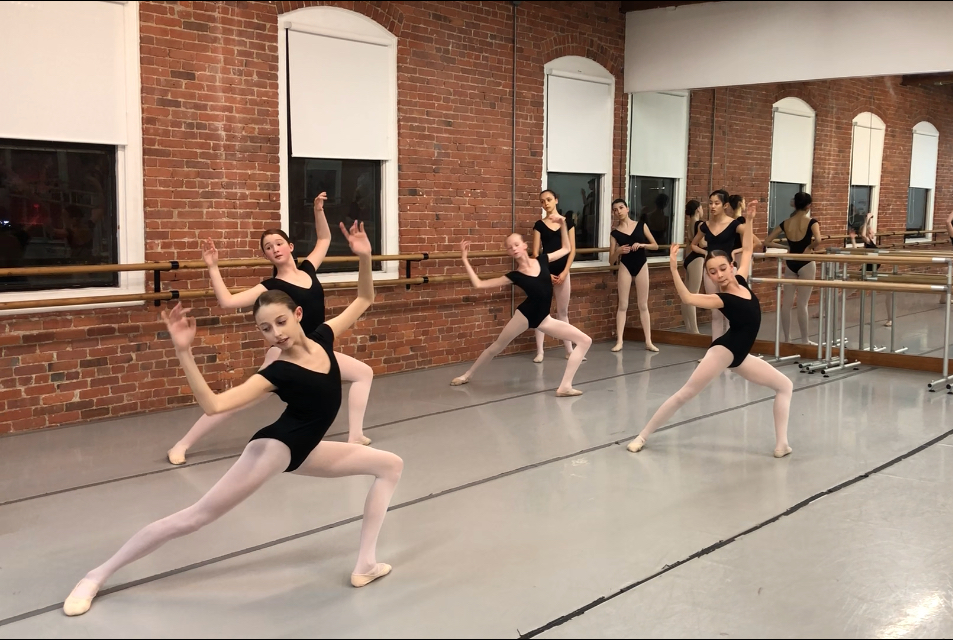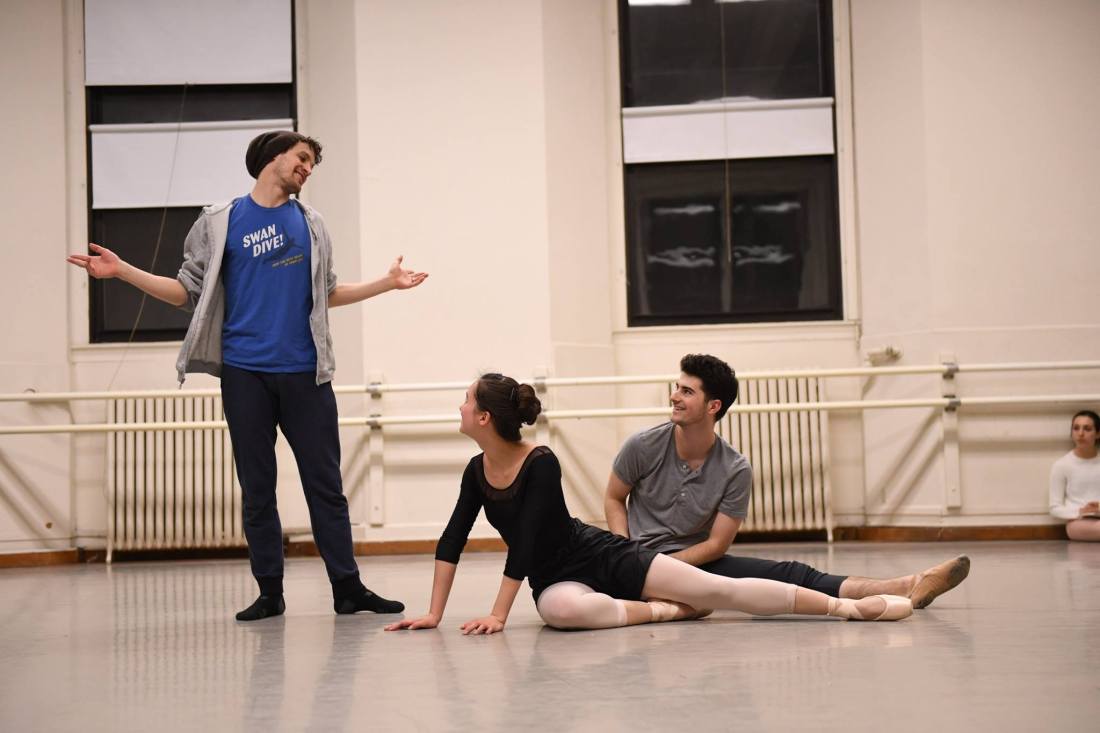
As professional artists, we have worked very hard to perfect our art. In fact, for many of us, our entire lives have been dedicated to perfectionist acts in order to understand, live, and share our art form. For me, it sometimes feels like there is nothing more important than the refinement process in the studio, the artistic process in the psyche, and the exploratory process in the form of play, trial, and error. But at times, I catch myself sharing my artistic practices (something I care about very deeply) as if they have more value than anything else in the world. I’ve wondered over the years whether this makes me impassioned or gives off an air of pretension.
During my time dancing with Pacific Northwest Ballet, I was extremely unaware of the insular artistic bubble that I existed in. While dancing for this high-end organization for 7 seasons, dozens of highly qualified artists worked diligently daily beside one another using collaboration and competition to boost one another to the next level of perfectionism. This works well on an insular level. But it also tends to dissolve an artist’s reality outside of this bubble, as it requires an intense level of commitment and effort. Striving for perfection daily along with constant peer-to-peer comparison creates an atmosphere of exponential growth. But it also cultivates a sense of judgment that (while helpful and understood within our tight-knit community) bled outside of our thickly insulated bubble. This often led to intense scrutiny of all things across our art form as if they were all being judged by the same standards as we were, albeit not sharing our company history or budget. It took me leaving this intense, safe atmosphere to recognize the benefits and downfalls of having a mentality that the work we were doing was more important than most anything else. This was a place where anybody who wasn’t achieving an equally high standard as we were could be judged using words including bad, fat, unmusical, cheap, awful, weak, unqualified, and a variety of other negative descriptions. While this may appear as perfectionist behavior within one community, it may project as pretentious if these unwelcome opinions are shared.
Every dance artist has to start somewhere. Aside from maybe one or two prodigies in every generation that passes by, practically no dancer naturally begins performing technical exercises with perfection, maintains perfect physical form at all times, dances with immaculate musicality, or exudes the inner soul of every character they portray. Most of us start out with recreational intentions. And many of us do so without regards to how our feet are pointed, how fit we are, or how it makes us feel emotionally. All of these characteristics plus passion must be cultivated within an artist over a period of time without judgment beyond constructive individualized criticism. Similarly, all audiences must be shown why it is important for them to be involved in any cultural institution. If we present artists with expectations of pure perfection before they are ready to put that pressure upon themselves, it will be impossible to build the future of our art form.

In my own personal practice as a dance educator and choreographer, I have found myself exploring the practice of making our art form important to my students without coming off as pretentious about the need for extreme effort, motivation, and artistry. Just because I had success in my performance career and love what I do doesn’t mean that anybody who enters my classroom will share the same sentiment as me. Just because I tell a student that something is important doesn’t mean it actually is to them. What I try to do is slowly educate those in my classes about all aspects of our art form. By adding interesting trivia questions at the beginning of class, I subtly educate students on American (and sometimes international) dance culture. Whether listing off major, regional, and civic dance companies, to explaining the company rankings, offering details on full length and one act works, the internal administrative and artistic workings of a company, and choreographers of note, I offer information that a student can take home with them and research if they find it interesting. Beyond this, I use other tactics to motivate physical and artistic development. Only when we pique a blossoming artist’s interest can dance become something more than an after-school activity.
When I first started teaching, I expected dancers to work hard because I already had them in my classroom. What I found was that many dancers didn’t understand why they had to work hard or know how to work hard in a way that was effective. My perfectionist tendencies would project onto students and come off as pretentious because they had not yet bought into the process or the need to create a sense of importance around their work in the studio. It is necessary to buy-in to do many tasks that artists do. Why do I care that I am holding my leg at or above 90 degrees for 8 counts? Why does it matter if I do or don’t let my standing leg give out in a pirouette. Lately, I have found myself telling students that, in the grand scheme of the world, it isn’t important that they want to do these things. But in order to accomplish these feats, it is integral that in those moments they are working in class or onstage that they feel that the work is the most important thing on earth. Only then can we accomplish superhuman feats. But it is also important while working with impressionable students (young to senior) that we remind them that there is a reality outside of our beautiful art form that must be recognized.
Looking at the separation between pretension and perfection in our art form also lies in who we are interacting with and how we respond to others that we feel haven’t yet obtained the same level of execution or understanding that we have. If something is important to me, but not you, and I really push the point, I may come off as pretentious. We too often share the tendency to tear down others in their process of finding artistic excellence, especially without consideration for where they came from and where they are going. I remember when I first started my 4 years freelancing with multiple established and fledgling professional organizations across the country. Only having the standards that surrounded me during my time dancing at PNB, I judgmentally felt that anything that wasn’t on the level of work that I had been a part of during my tenure there was either bad, dysfunctional, or laughable. I was afraid to share some of what I was doing publicly for fear of humiliation when viewed through the eyes of my former colleagues. But what I learned throughout this period was one of the most important lessons I’ve learned throughout the entirety of my nearly 16 year career, thus far. We must remember that we are not all dancing along parallel tracks of artistic growth and expectation. We all exist in different stages of our art form and all have different purposes that can grow or reroute at any time. A great example of this can be seen in the differences between dance organizations across the country. Some regional dance companies are still in the audience education period of their organization’s growth. Yes, their practices may currently be flawed. Yes, the quality of their performances may pale in comparison to companies with multi-million dollar budgets. But most of the nation’s finest cultural institutions started this way. Look at American Ballet Theatre. When they were merely just Ballet Theatre touring around the country by bus and performing in any and every theatre possible, they probably didn’t have the finest quality productions. Additionally, there was no nationwide comparison to vouch for the quality of these dancers. But look at them today. They are one of the leading arts organizations in the world.
The important thing to recognize here is that all artists are an important part of our community, whatever stage they are at in our art form. And in order to continue cultivating dance into a sustainable place, we must develop the importance of perfectionist actions through a carefully curated process that neither pushes potential artists away from the art form, nor tears down working artists that are not quite as far down their professional path as you are. If a young dancer stops training because the teacher doesn’t slowly allow them to explore why our art form is important, we have failed. If younger arts organizations try to force their audience to understand our art form too quickly, people will look at the organization as if they are pretentious and the company may begin to lose support. Without community support an arts organization can no longer exist. Pretension is a turn off that slows down or completely halts the progress of our art. For this reason, it is so important that we don’t let our own personal or “insular-bubble” perfectionism project unto others. Instead, I find it best to offer a helping hand that is ready to offer guidance and insight only when an artist is ready to accept it.